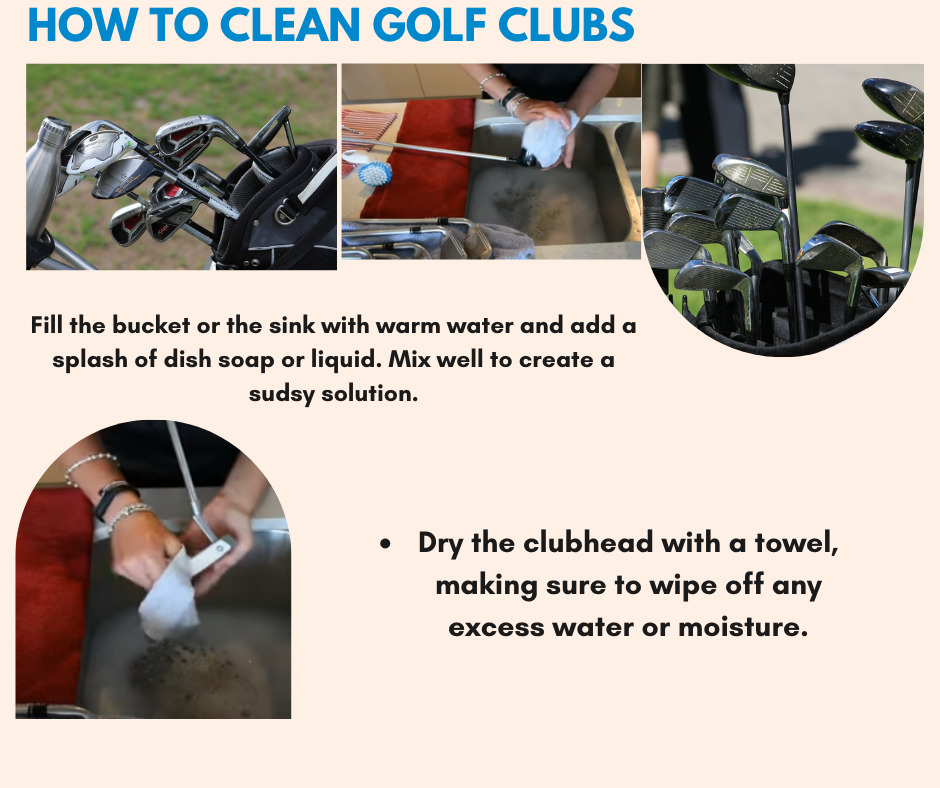How Often Should You Clean Your Golf Clubs
When it comes to golf club maintenance, one important question that often arises is, “How often should you clean your golf clubs?” Properly cleaning and maintaining your golf clubs is essential for optimal performance on the course and longevity of your equipment.
In this comprehensive guide, we will delve into the various aspects of golf club cleaning, including frequency, methods, and best practices. So grab your club and let’s get started on the journey to clean and well-maintained golf clubs!
Why Clean Your Golf Clubs Regularly?

Before we dive into the specifics of how often you should clean your golf clubs, let’s understand why regular cleaning is necessary. Over time, dirt, grass, sand, and debris can accumulate on the clubheads and grips, affecting their performance. The buildup of dirt and debris can also lead to rusting and corrosion, which can significantly impact the lifespan of your clubs.
Regular cleaning not only helps maintain the appearance of your clubs but also ensures optimal performance. Clean clubfaces provide better contact with the ball, leading to improved accuracy and distance.
Furthermore, clean grips offer a secure and comfortable hold, preventing slipping and enhancing control during swings. With these benefits in mind, let’s explore how frequently you should clean your golf clubs.
How Often Should You Clean Your Golf Clubs?
To keep your golf clubs in top condition, it is recommended to clean them after every round of golf. This regular cleaning routine ensures that any dirt, grass, or residue is promptly removed, preventing it from accumulating and causing long-term damage to your clubs.
Additionally, cleaning your clubs after each round allows you to inspect them for any signs of wear and tear, ensuring timely maintenance or replacement if necessary.
It is worth noting that some golfers prefer to clean their clubs after every few rounds, especially if they play frequently. However, cleaning after each round is generally the most effective approach to maintaining your clubs’ performance and longevity.
The Cleaning Process: Step-by-Step

Now that we’ve established the importance of regular cleaning, let’s explore the step-by-step process to clean your golf clubs effectively. Follow these guidelines to ensure thorough cleaning and optimal results:
Step 1: Gather the Necessary Supplies
Before you begin the cleaning process, make sure you have all the supplies at hand. Here’s a list of items you’ll need:
- A bucket or basin filled with warm water
- Mild dish soap or golf club cleaning solution
- A soft-bristled brush
- A towel or cloth for drying
Step 2: Prepare the Cleaning Solution
Fill the bucket or basin with warm water and add a small amount of mild dish soap or a specialized golf club cleaning solution. Avoid using harsh chemicals or abrasive cleaners, as they can damage the clubheads or grips.
Step 3: Submerge the Clubheads
Submerge the clubheads into the cleaning solution, ensuring that the water covers the entire surface. Allow them to soak for a few minutes to loosen any dirt or debris.
Step 4: Scrub the Clubheads
Using a soft-bristled brush, gently scrub the clubheads to remove any stubborn dirt or residue. Pay close attention to the grooves on the clubfaces, as they can accumulate debris that affects spin and ball control.
Step 5: Clean the Grips
While the clubheads are soaking, take the opportunity to clean the grips. Dip a cloth or towel into the cleaning solution and gently wipe down the grips, removing any dirt or sweat. This step helps maintain a firm grip and prevents slipping during swings.
Step 6: Rinse and Dry
After scrubbing the clubheads and cleaning the grips, rinse the clubs thoroughly with clean water to remove any soap residue. Once rinsed, use a towel or cloth to dry the clubs completely. Ensure that no moisture remains on the clubheads or grips to prevent rusting or damage.
Step 7: Inspect and Store
Take a moment to inspect your clubs after cleaning them. Look for any signs of damage, such as loose clubheads, worn grips, or bent shafts. If you notice any issues, consult a professional for repairs or replacements.
Finally, store your golf clubs in a cool, dry place, preferably in a golf bag or protective headcovers. Proper storage helps maintain the cleanliness and integrity of your clubs until your next round.
FAQs about Cleaning Golf Clubs
Here are some frequently asked questions about cleaning golf clubs, along with concise answers to provide further clarity:
Can I use a dishwasher to clean my golf clubs?
No, using a dishwasher is not recommended for cleaning golf clubs. The high heat and pressure can damage the clubheads and grips. Stick to the manual cleaning process outlined in this guide for best results.
How often should I replace my golf club grips?
The frequency of grip replacement depends on factors such as usage, climate, and personal preference. As a general guideline, consider replacing your grips every 1-2 years or whenever they show signs of significant wear or loss of tackiness.
Should I clean my golf clubs if I haven’t used them for a while?
Yes, it is advisable to clean your golf clubs even if they have been unused for a while. Dust and debris can accumulate during storage, and cleaning before use ensures optimal performance.
Can I use a wire brush to clean my clubheads?
No, wire brushes are too abrasive and can scratch or damage the clubfaces. Stick to soft-bristled brushes or specialized club cleaning brushes for safe and effective cleaning.
Are there any specific cleaning techniques for forged irons?
Forged irons require extra care during cleaning to preserve their finish. Use a softer brush and avoid abrasive cleaners that can scratch the delicate surface. Dry the clubheads thoroughly after cleaning to prevent rusting.
Is it necessary to clean the clubheads of all golf clubs, including putters?
Yes, it is essential to clean the clubheads of all your golf clubs, including putters. Even though putters are primarily used on the green and may not accumulate as much dirt, regular cleaning ensures consistent performance.
Conclusion
In conclusion, regular cleaning is crucial for maintaining the performance and longevity of your golf clubs. Cleaning your clubs after each round, using a gentle cleaning solution and soft-bristled brush, helps remove dirt, debris, and residue. Additionally, inspecting your clubs for any signs of damage allows for timely repairs or replacements.
Following the step-by-step cleaning process outlined in this guide and adhering to the recommended cleaning frequency, you can ensure that your golf clubs remain in optimal condition.
So make it a habit to clean your golf clubs regularly and enjoy improved performance on the course!
Conclusion







